Protecting Chicago’s Lakefront: Freshwater Beach Monitoring
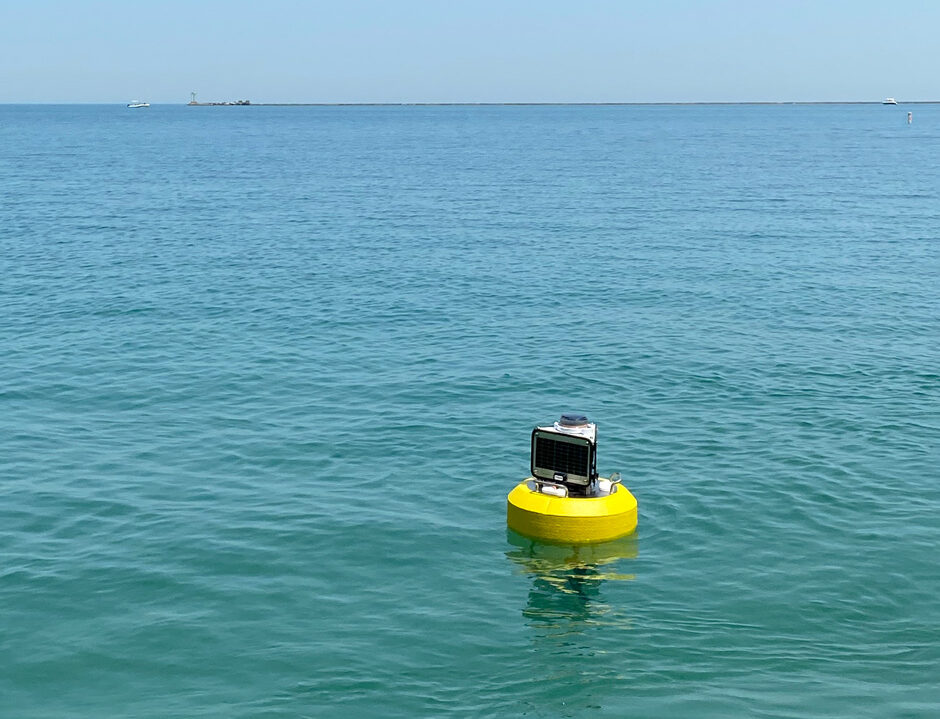 CB-75-SVS buoy with a view of Lake Michigan. (Credit: Maggie Warren / Chicago Park District)
CB-75-SVS buoy with a view of Lake Michigan. (Credit: Maggie Warren / Chicago Park District)Thousands of people flock to the Great Lakes every year to enjoy the freshwater beaches along the coast. As an urban hub with over 2.5 million residents, beachfronts in Chicago have regular visitors as well as tourists that recreate in the bordering Lake Michigan.
According to the Chicago Park District, it is estimated that more than 100,000 residents and visitors per day use Chicago’s Lakefront trail during summer weekends.
Proximity to the Lake is not only a recreational activity for Chicagoans, but also a part of the city’s history due to its role in domestic and international shipping routes. In addition, the Lake serves as a drinking water source and as an essential climate regulator in the region that acts as a natural air conditioning affect.
Monitoring of the beaches ensures that the water is safe for recreating, ensuring that one of the Lake’s many services is protected. The Chicago Park District (Park District) is tasked with monitoring the beaches to ensure water quality meets EPA standards and that the public can safely enjoy Chicago’s beaches.
Maggie Warren took over as the water quality project manager for the Park District within the past year and was excited for her first beach season this summer. She explains, “It’s rewarding to be able to work to provide this resource to Chicago’s residents, and I get to enjoy it myself.”
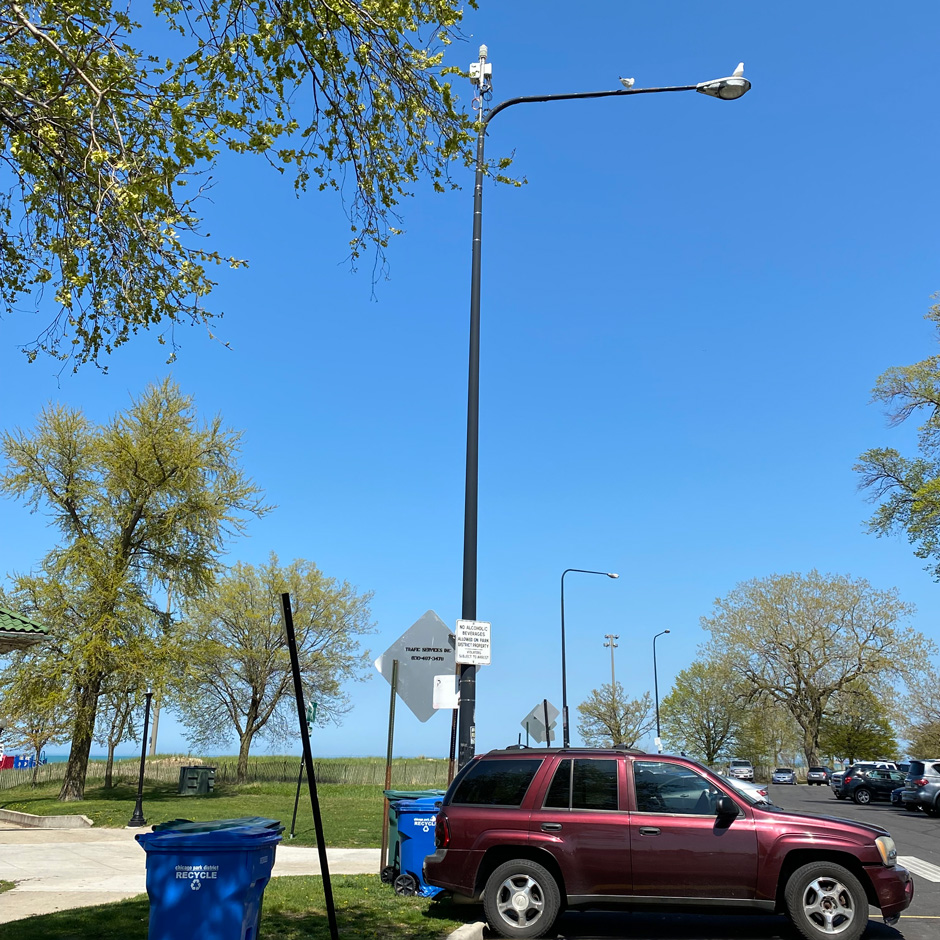
Lufft WS600 station at 63rd Street Beach. (Credit: Maggie Warren / Chicago Park District)
Monitoring Lake Michigan Beaches in Chicago
The Park District manages 26 miles of open lakefront for the enjoyment of residents and visitors as well as wildlife that flock to the area. A close partnership with the University of Illinois-Chicago (UIC) is a major part of what makes daily sampling possible.
Warren elaborates, “Each beach is tested daily with UIC students sampling the water at sunrise, and then taking the samples to be tested in the lab. We use the quantitative polymerase chain reaction (qPCR) methods. The results are then sent to me within three to four hours. I translate this data using the EPA’s water quality recreation criteria and share the information with the public through the Park District’s outreach methods.”
Fortunately, the beaches aren’t impacted by point-source pollution, so daily sampling focuses on finding enterococci bacteria, an indicator bacteria similar to E. coli. High levels of enterococci indicate whether the water is safe to swim in, based on the EPA’s standards. Frequent sampling is critical because it allows the Park District to provide real-time information that impacts public health decisions and also facilitates trend spotting.
Additional research projects are also happening along the coast, all of which are compiled in the annual report that provides an analysis of beach conditions. In terms of real-time monitoring, Chicago currently utilizes a select number of weather stations and a data buoy to gather environmental data.
The weather stations are equipped with a LI-COR LI-200R Solar Radiation Sensor and multiparameter weather stations, which gather weather data along the beachfront. Weather data and the daily sampling results help inform beach closures and swimming restrictions whenever necessary for beach-goers’ safety.
A CB-25-SVS Wave Buoy monitors conditions away from the shoreline and provides data to boaters, triathlon swimmers, and other recreational users of the Lake as well as first responders who need to consider Lake conditions before setting out for the day. Equipped with an X2-SDLMC, the buoy provides real-time data to the City of Chicago’s data portal and the Chicago Park District website as well as Seagull.
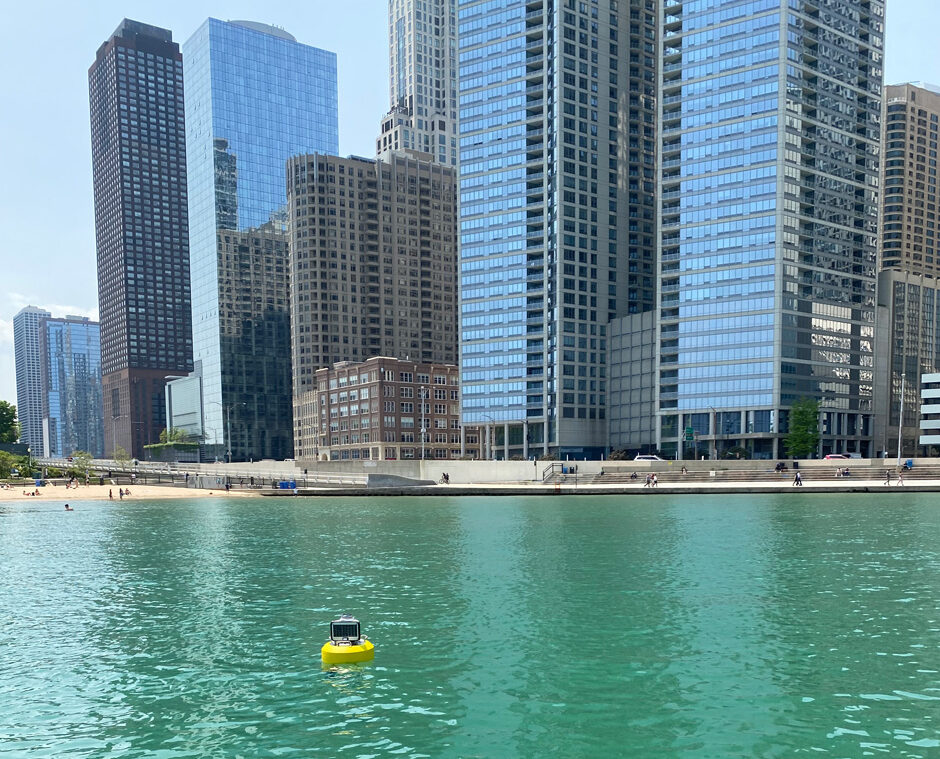
CB-75-SVS buoy with Ohio Street Beach and Lake Shore Drive in the background. (Credit: Maggie Warren / Chicago Park District)
Creating Redundancies in Communication
Interpretation of the data is shared in the daily beach report as well as communicated via the Chicago Park District’s flag notification system at the beaches. Data is shared via multiple methods, and the goal is to communicate effectively to everyone.
Warren explains, “Having lots of different types of means for communicating is a way for us to mitigate any potential problems that might arise. By having things be digital and also physically posted at the beaches, it makes it so that even if you’re just showing up at the beach, you’ll be able to be notified.” She continues, “It helps to have lots of redundancies in the system just to mitigate anything that might pop up.”
The combination of real-time and spot sampling helps develop a complete view of conditions on the Lake, allowing managers like Warren to spot trends and better prepare for the upcoming season. Having a combination of environmental data available also makes it easier to communicate with the public when advisories need to be posted to alert the public.
“[Our work] is about making sure that people are safe and able to recreate on the beaches with information easily accessible to make the best decisions for their wellbeing,” says Warren.
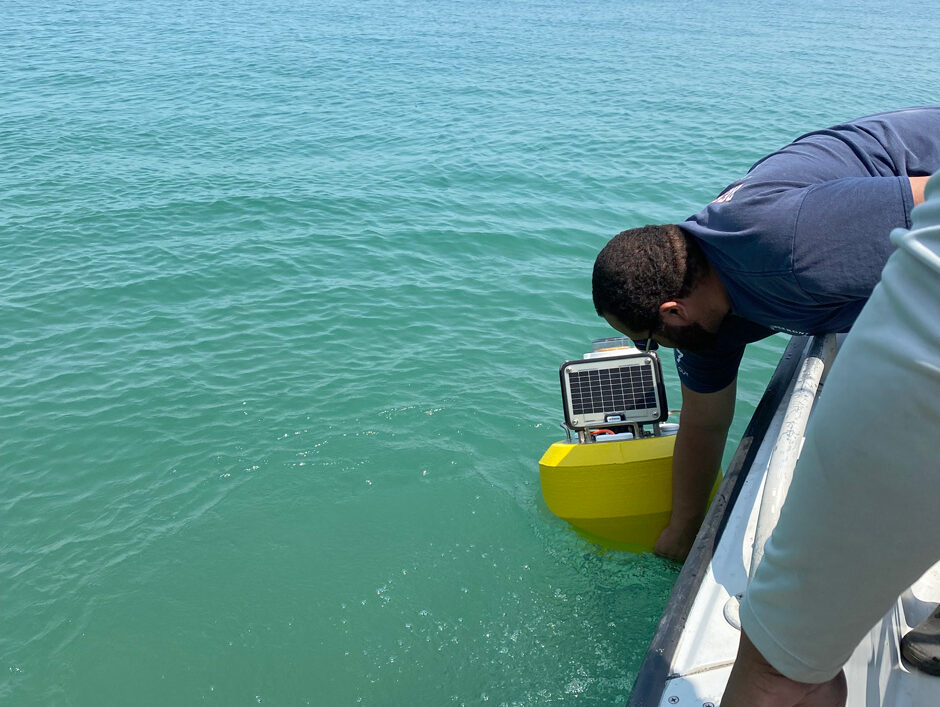
CB-75-SVS buoy deployment with Chicago Park District lifeguards at Ohio Street Beach in Lake Michigan. (Credit: Maggie Warren / Chicago Park District)
Conclusion
This information gathering and sharing wouldn’t be possible without the work of UIC students, as well as the real-time ease of the weather stations and data buoy. Together, Warren is given hundreds of data points to analyze during the off-season and dozens to consider throughout the day.
“It’s an incredible amount of work to test all of the beaches daily, and it is something that I’m really grateful to work with such a dedicated group of people,” explains Warren.
Just like many others living along the Great Lakes, Warren has found herself attached to Lake Michigan and the work she and the Park District do helps visitors and other Chicagoans find that connection as well. She explains, “This job has provided a greater understanding for Lake Michigan and appreciation for the Great Lakes ecosystem in general, I feel like I’ve gotten a much more personal relationship with the Lake.”
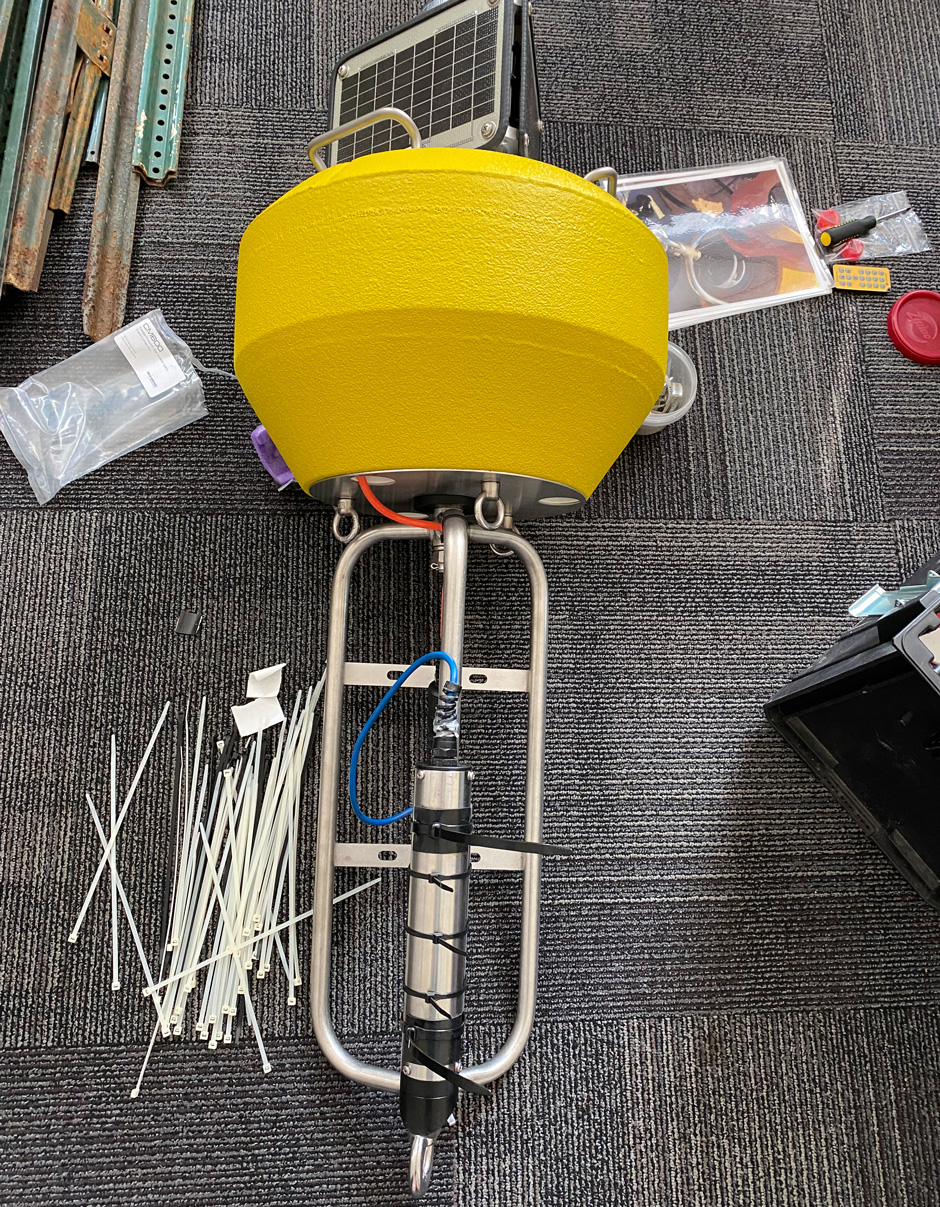
CB-75-SVS buoy assembly at the Chicago Park District Office. (Credit: Maggie Warren / Chicago Park District)




0 comments